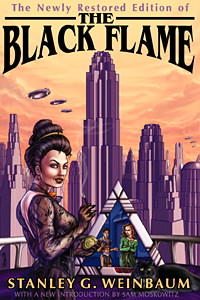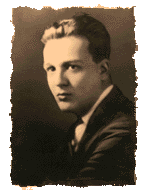 |
||||
| The Black Flame by Stanley G. Weinbaum | ||||
|
||||
 |
||||
 |
||
-The New York Review of Science Fiction . . . a jewel of a novel from the Golden Age of science fiction. The book bursts with fine detail keenly rendered. - Inner Journeys . . . I marvel at the sight of Weinbaum heroically hewing modern SF out of a lump of granite, using primitive tools and raw power. Sam Moskowitz's intro is a just-the-facts-ma'am narrative of the struggles endured by Weinabaum to sell this book, which - Isaac Asimov's Science Fiction Magazine In his short career, Stanley G. Weinbaum revolutionized science fiction. We are still exploring the themes he gave us. How good to have this early work again, and now with the author's complete text. It is not only of great historical interest, it is a colorful, inventive, and exciting story. - Poul Anderson Stanley G. Weinbaum's name deserves to rank with those of Wells and Heinlein - and no more than a handful of others - as among the great shapers of modern science fiction. Sadly, most of the marvelous works he produced in his all too brief career were in the form of short stories and novelettes, and so are overlooked by many of today's readers. Which is all the more reason to rejoice that Tachyon Publications has brought his novel, The Black Flame, back into print for us to read - and moreover, for the first time, it is published just as Weinbaum wrote it. - Frederik Pohl During the single year of 1935, Astounding published seven stories by Weinbaum; and in March 1936 . . . his obituary. His entire career had spanned little more than eighteen months, and is the saddest "what might have been" in the whole history of science fiction. - Arthur C. Clarke Somehow [Weinbaum] had the imagination to envisage wholly alien situations and psychologies and entities, to devise consistent events from wholly alien motives and to refrain from the cheap dramatics in which all adventure-pulpists wallow. - H.P. Lovecraft | ||
 |
||
Dawn of Flame and Other Stories (1936) The New Adam (1939) The Black Flame (1948) A Martian Odyessey and Others (1949) The Red Peril (1952) short stories The Best of Stanley G. Weinbaum (1977) (recommended) The Black Flame (restored edition) 1995 | ||
 |
||

Last updated April 4, 1998.
Please e-mail us with any queries.
